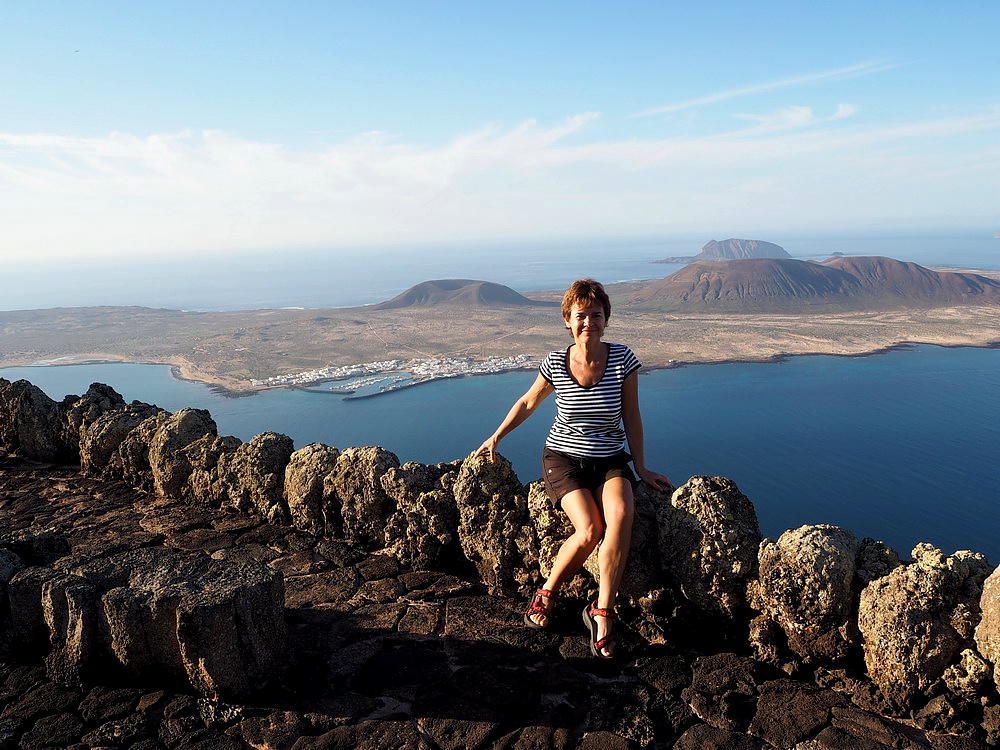You will not find picturesque beaches or leaning palm trees here. Instead there are unique caves, lakes and bright white houses scattered around the brown-black volcanic terrain, creating a unique atmosphere. The northernmost and eldest of the seven larger Canary-islands, Lanzarote is a favorite destination of gourmet travelers as well.
In 1973 Omar Sharif came to Lanzarote to film “The Mysterious Island”, when he spotted a beautiful villa above the village of Nazaret. He fell so in love with it that he purchased it instantly. Locals later named the house LagOmar.
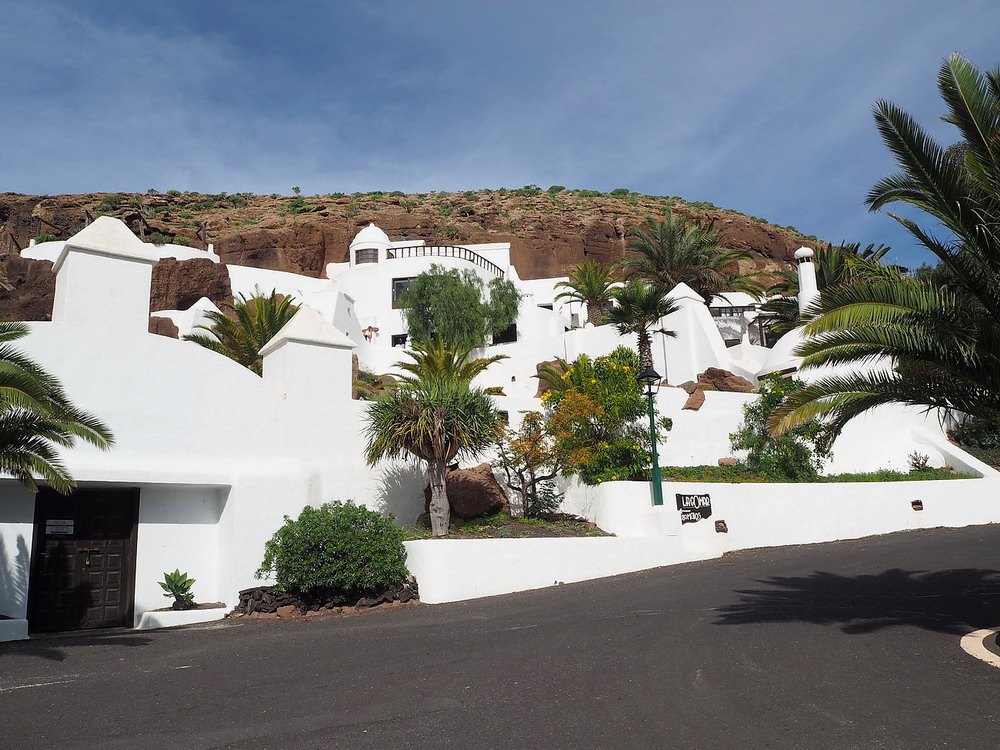
So, Did He Lose the Villa at the Bridge Table?
Omar Sharif could not enjoy his new house for too long. Sam Benady who had originally built it, desperately wanted it back. He knew about Sharif’s passion for gambling and invited the famous actor a bridge game. Sharif willingly accepted the challenge and gambled his beloved villa since he was an expert bridge player. What he did not know was that Benady was a bridge champion who effortlessly beat the actor and claimed the villa.
While an interesting story, it is nothing more – a tale with without truth. This fact does not deter the current owners of advertising the villa with Omar Sharif’s name. They have even created a card-room to make the illusion as real as possible! I actually found an article denying this myth while I was visiting the villa. However, no matter how hard I researched, I only found the legend version everywhere else. I contacted the tourist office of Lanzarote to try and discover the truth and they confirmed that the story is only a myth.
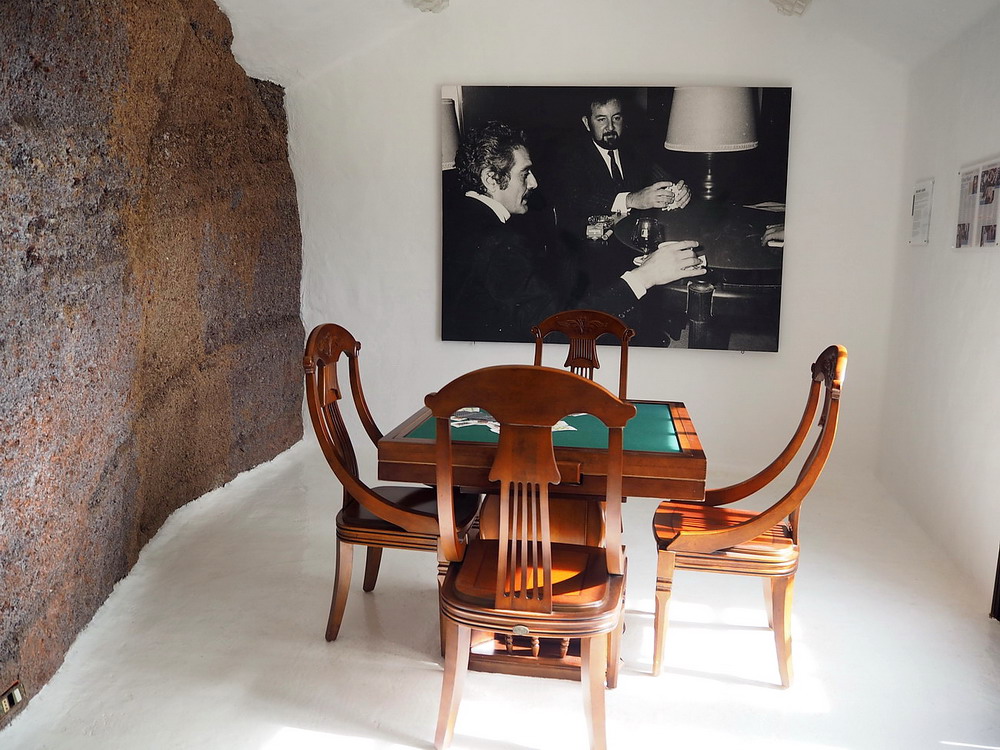
Edge and coolness
The current owners first saw the villa in 1989 and just as Sharif did in the myth, they also fell in love with the place. They completed the renovation of the villa, furnished it and opened a small restaurant overlooking the lagoon, where they organize jazz concerts and exhibitions. There are also two apartments to rent. For an entrance fee (6 EUR) visitors can walk around and explore the estate.
Despite the fact that LagOmar’s marketing is based on a legend, it is actually a quite genuine place. The whole complex is very charming with some surprising edge and coolness with hidden staircases and fountains, secret trails leading to nowhere, weird chimneys and artwork. Every turn reveals something new and unexpected: palm-oasis, vibrant yellow and red stone garden, views of amazing volcanic mountains and the deep blue ocean. These are the characteristics not only of LagOmar but also of the whole island. Although every year brings more and more tourists to Lanzarote the vibrant energy and raw force of the place is still very much present.
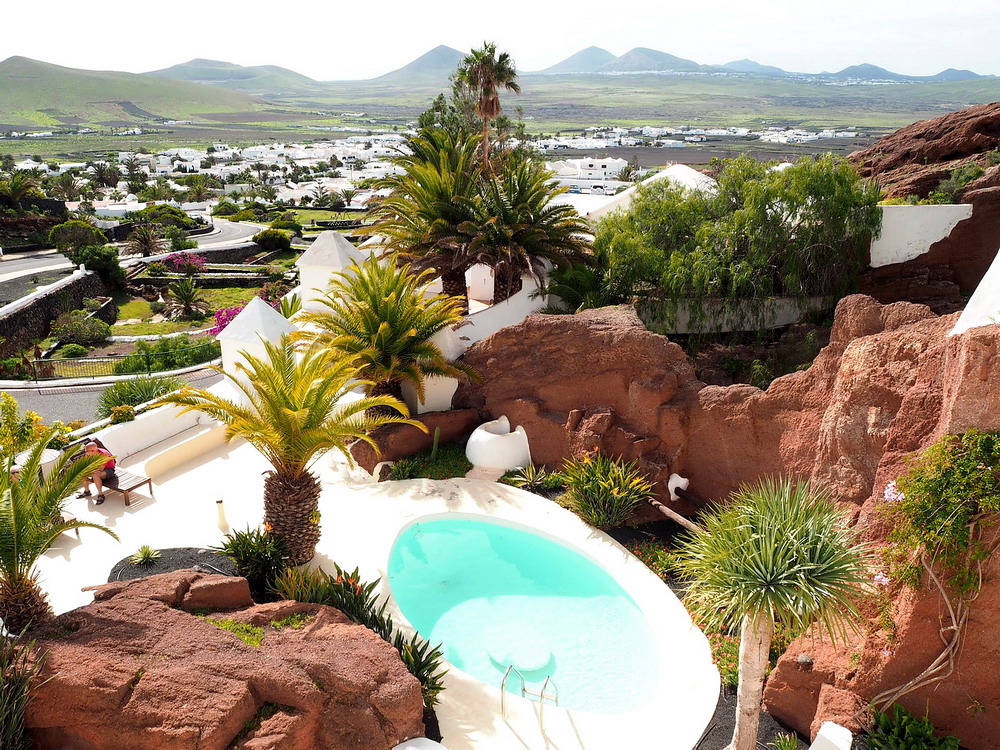
Art-land Island
Not too far from Sharif’s villa, there is another famous house: where César Manrique lived, the most famous inhabitant of Lanzarote. A renowned artist, painter, architect, photographer and landscaper who still has a great influence on the island even today.
When driving from the airport to my hotel I noticed how similar the villages are. They are filled with bright white houses and one or two story buildings with green window frames. The similarity soon became clear; Lanzarote is basically artwork itself. The architecture and landscape are vision and influence of an artist. His legacy is witnessed everywhere: the houses, the grandiose sculptures in the middle of the roundabouts or all over the cactus-gardens.

Manrique returned from New York in 1966, when tourism in Lanzarote was on the rise. The famous artist started an eventually successful campaign on sustainable development with the utmost respect towards nature and the local traditions. He did not only change the landscape but also the thinking of the local people. As a result, the villages have a certain brand, there are no high-rise buildings or billboards. He also lobbied diligently for regulations to limit commercial development. Growing tourism during the 1980s threatened what he had worked so hard to protect and preserve but his advocates were successful at limiting new projects that would compromise his legacy.
Cesar Manrique’s most famous creation is probably his own house where he lived between 1966 and 1988. He built five unique rooms in natural lava-bubbles shape connected by cozy cave-like corridors. The building which has hosted many celebrities in the past is now the headquarters of the foundation named after him, where besides the original furnishing, Manrique’s photos, sculptures and sketches are also on display.

Manrique’s Dreams Turned Into Reality
Manrique has three spectacular artworks which everyone must visit. One of them is the Mirador del Rio, the popular sunset spot. The building is genius on its own. It nicely fades into the surroundings with its spacious café and panoramic windows where guests can enjoy the view of the black lava, the azure ocean with the small green island of Isla Graciosa.
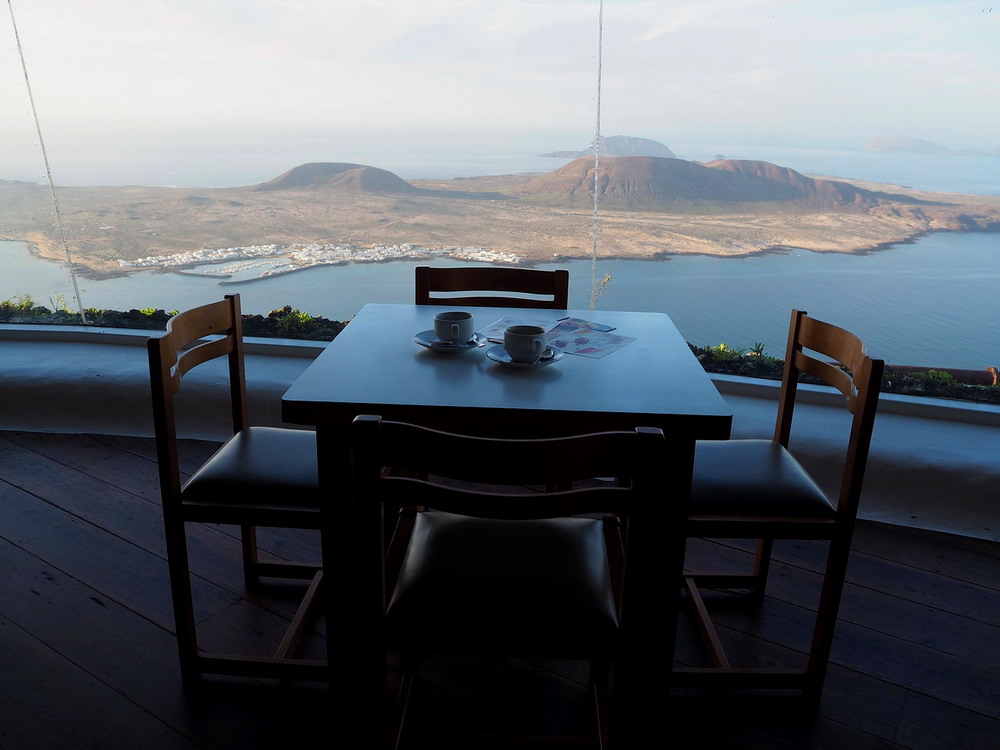
The second one is the cactus-garden, a rather interesting botanical garden with 1,500 species neatly labeled, a real paradise for a cactus lover! The only attraction visible from the parking lot upon arrival is the tip of a windmill. Visitors need to take a few steps from the ticket office to first encounter the view. The garden is technically a giant hole in the ground with terraces running around the edge. Cacti grow on these terraces and small lakes with lilies serve as decoration.
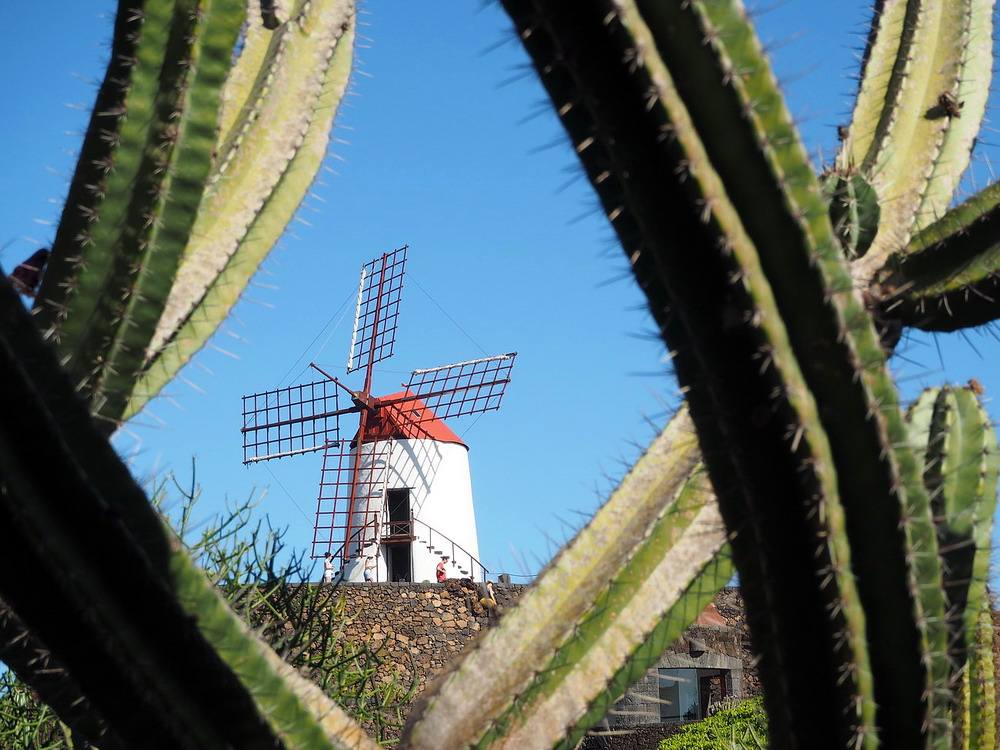
Albino and blind shrimps
And at last, my favorite, the third one, Jameos de Auga. Following the eruption of La Corona volcano a tunnel was formed which spans a few hundred meters. The ocean found its way to the tunnel and a small lake was created. Manrique dreamed of a small restaurant and bar at the lake with a pool and a small concert hall for 600 people. The aim was to bring life to this rather abandoned part of the island.
Upon entering, the first thing I saw was the small restaurant from above. It was a breathtaking experience, I needed a few minutes to absorb the view. The atmosphere was solemn like a cathedral. Then I spotted the lake with the tiny albino and blind shrimps – the kind which usually only lives deep in oceans, hidden from our eyes but here we can easily observe them. They are albino since there is no natural light in the cave. When I walked to the other side of the lake, I found myself in a lush garden. The magic was not over yet. I climbed a few stairs to find an unbelievably elegant pool filled with perfect blue water.
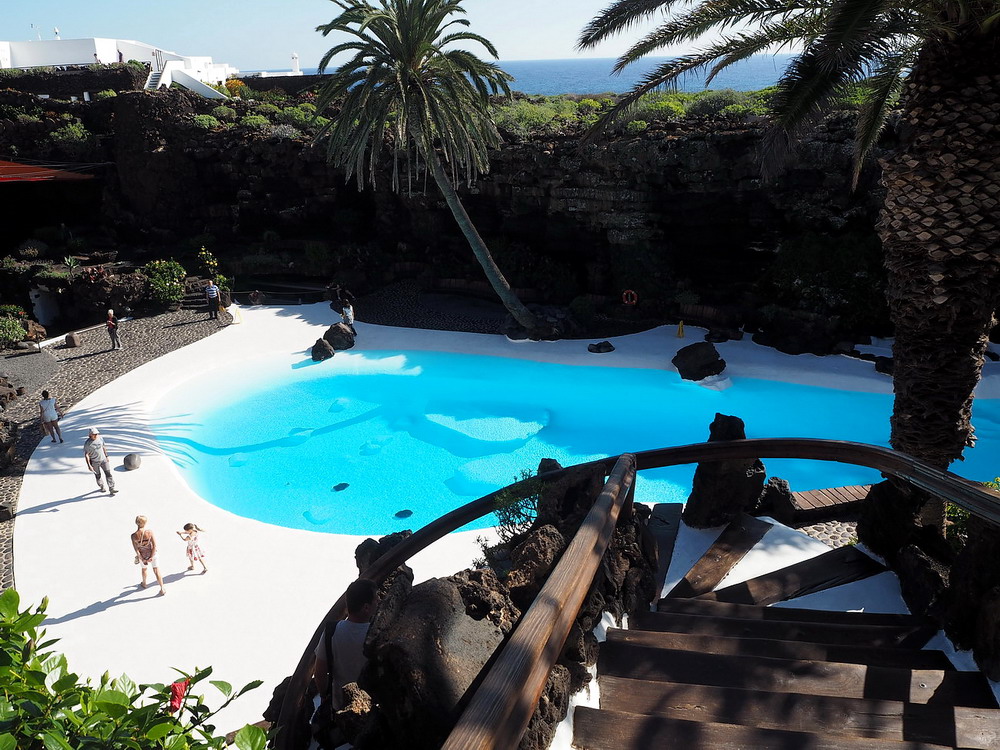
The only tourist attraction that I did not really like here was the Los Verdes cave. It is part of the same cave system but somehow it was not as beautiful to me. It can only be visited as part of a one-hour guided tour – covering approximately 1 km. We were too many, around 40 people and I think out of this 38 were crying children. None of the kids seemed to enjoy the darkness and the high humidity and they were too loud for us to be able to hear the guide who was clearly on the edge of a nervous breakdown. Important to note that the ceiling of the cave is very low at many points so it is not exactly the right place for people suffering from claustrophobia and/or back pain.
Solidified Lava Fields
What I did enjoy truly was the Timanfaya National Park. The only thing that bothered me here was that I could not take proper photos. It is only possible to visit the park by bus and the 14 km drive is rushed through in 30 mins. Tours are run by big buses accommodating 40-50 people and are available in English, Spanish and German. Although the bus drives slowly, it is challenging to take photos through the windows and there are no stops to get off. It is a shame because the park is beautiful with plenty of amazing opportunities calling for a picture!
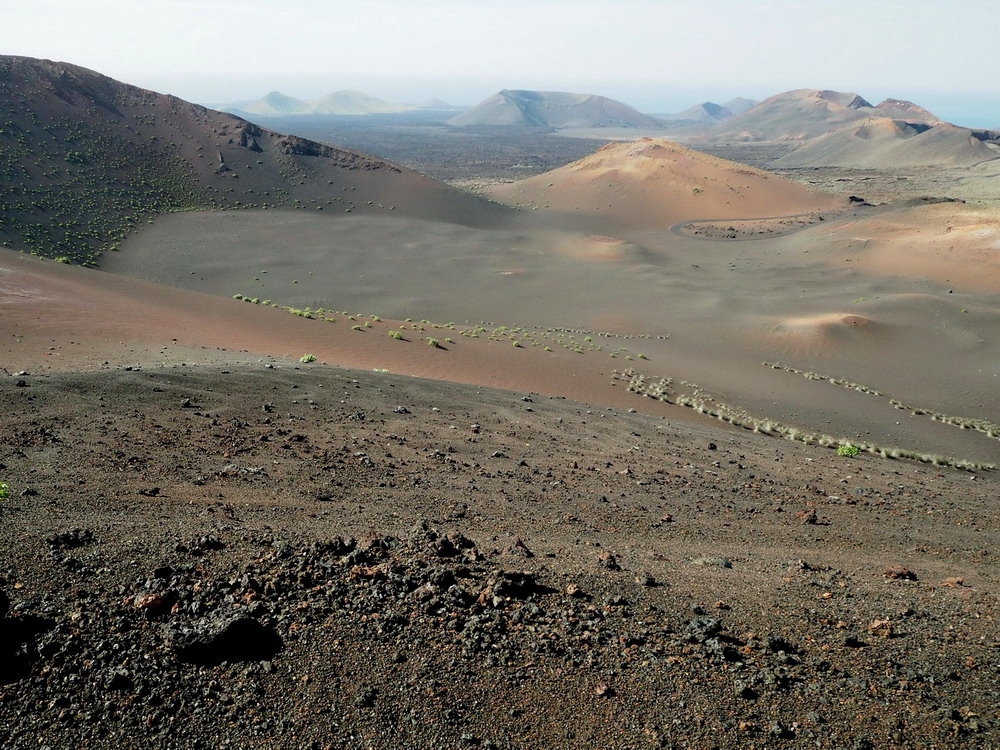
During the 1730s, for about six years, the island experienced constant volcanic eruptions – one of the biggest catastrophes of this nature in the history of mankind. A 50 sq km area was turned into volcanic ruins, many villages were completely demolished. Without much precipitation here, the landscape has not changed ever since: looks like a never ending, solidified lava field. There are a few plants here and there, but for the most part it is covered with grey, brown and red soil.
Unobstructed pictures can only be taken from the parking lot, but at least this opportunity comes with some extras. There is a restaurant with freshly grilled meals on the menu. The grill is an 8 meter deep hole with a grid on the top – as simple as that, no need for charcoal or fire! You only have to dig a few meters down and the temperature is already 4-600 C. Visitors are also entertained with a few tricks to demonstrate the underground heat. A dry bush is thrown into a well where it catches instant fire or water is poured into a thin pipe just to suddenly erupt in form of a geyser.
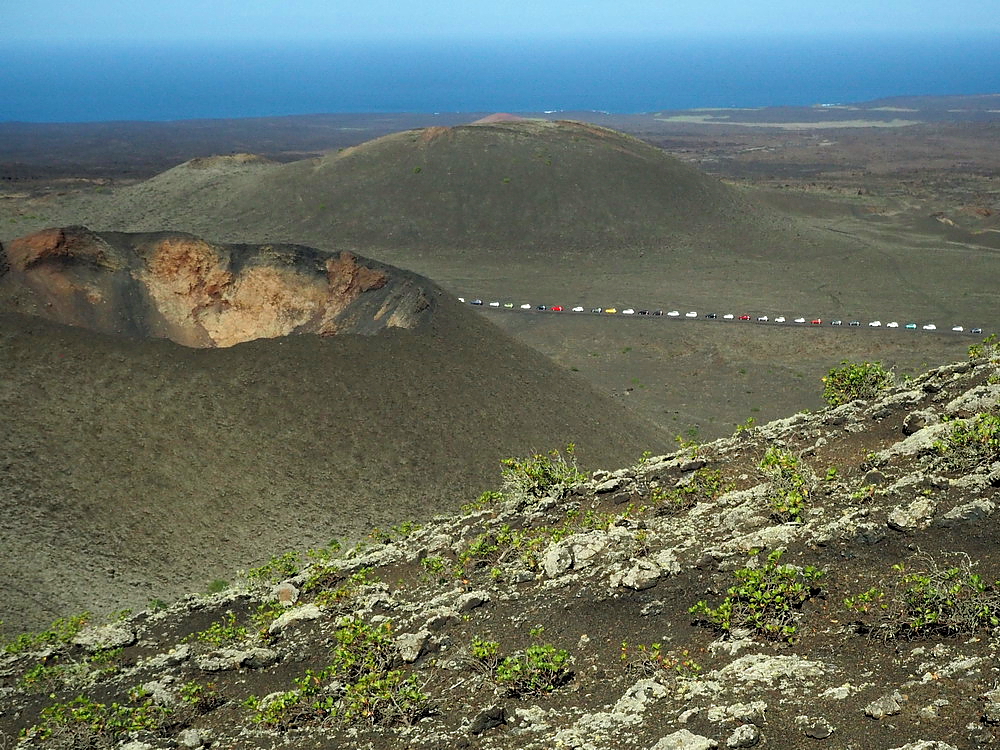
No Mass Tourism
There is only one way to explore the park on foot: every day at 10 am a guided tour leaves with 8 people but it needs to be booked months in advance through this link. Walking on the black volcanic soil is prohibited throughout the park though. It is only allowed outside the boundary of it, at the beach located to the north of El Golfo village. This area is also a popular sunset place with many lovely cafes and restaurants offering fresh local fish on the menu.

And of course, the Charco de los Clicos Lake is nearby as well with its amazing emerald-green color thanks to the algae living there. Truth be told, it is not as vivid green as it is on the enhanced photos on the web, but it is well worth a visit.
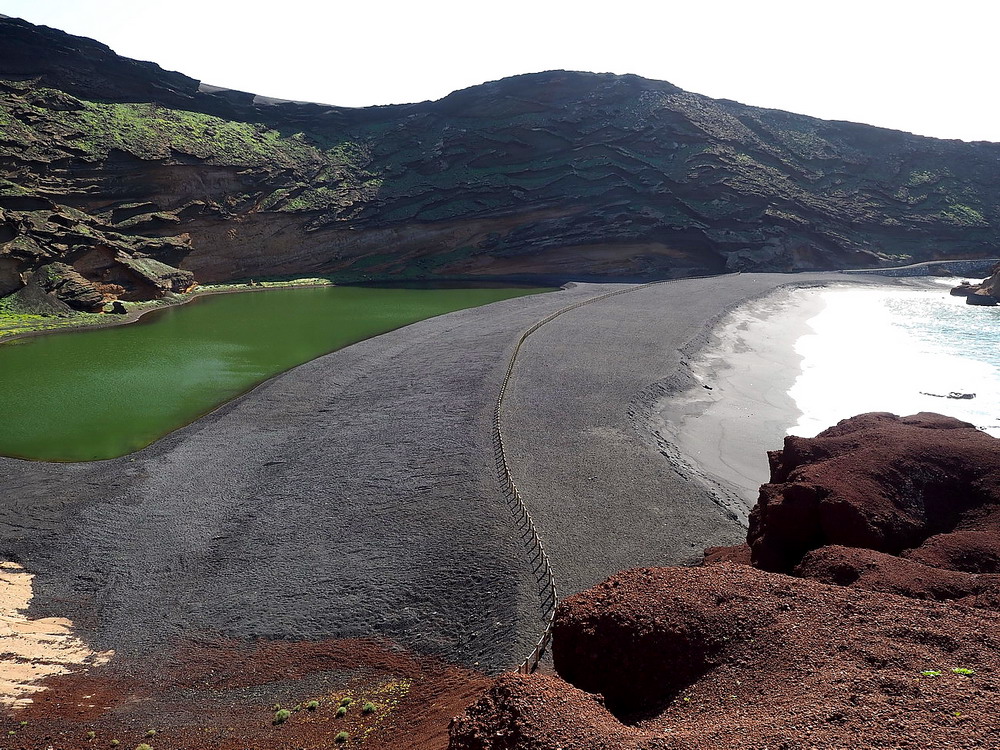
Anyone who is after postcard like beaches, will most likely be disappointed in Lanzarote. You might find beaches with golden sand here and there, but picturesque leaning palm trees will be missing. Just as trees in general. When I visited, the island was exceptionally green due to the above average rainfall, however normally the landscape would probably remind someone of that on the Moon. Lanzarote targets travelers who prefer to explore trails off the beaten track. There are no huge hotel resorts or noisy nightlife with party people. In exchange, there are cyclists, hikers and people enjoying local wine tasting.
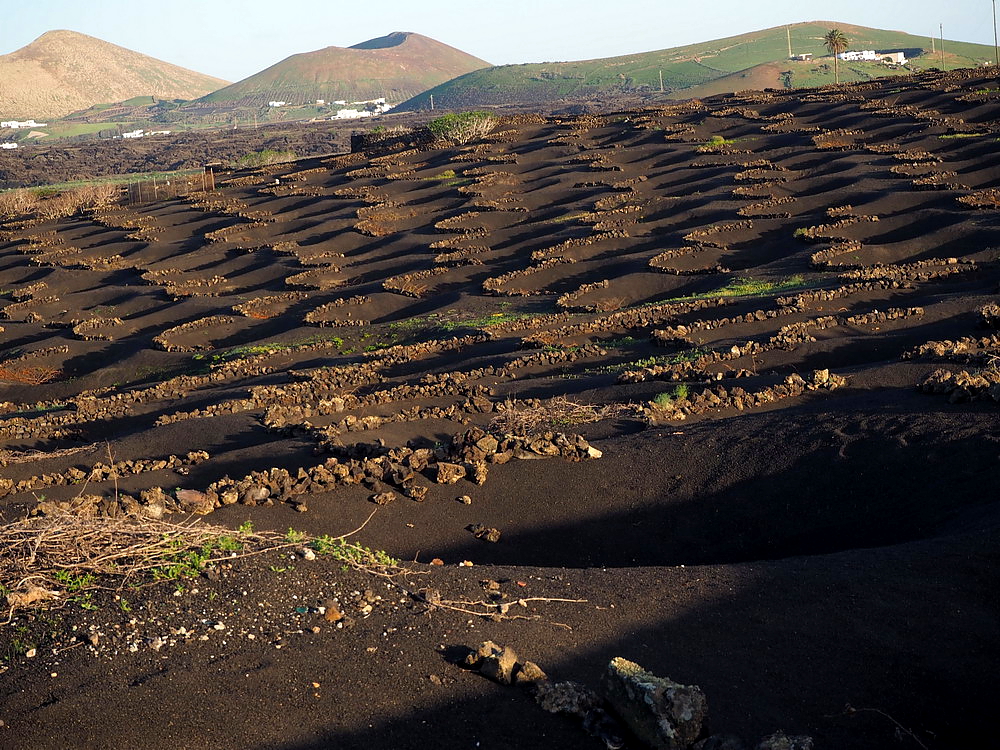
Thanks to the waves, water sports are a big hit as well. Lanzarote does not aim for mass tourism and as a result there are no crowds. A lovely place to visit with its cute houses, black beaches with wild sea and with its mild winter climate it is absolutely a place to fall in love with!

